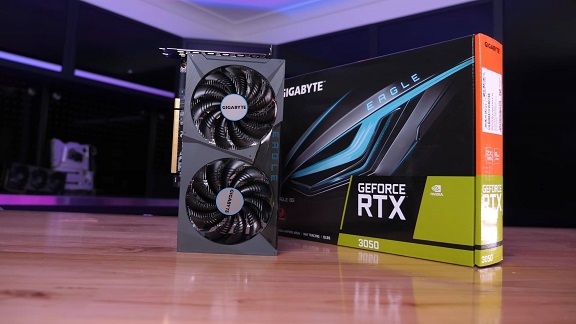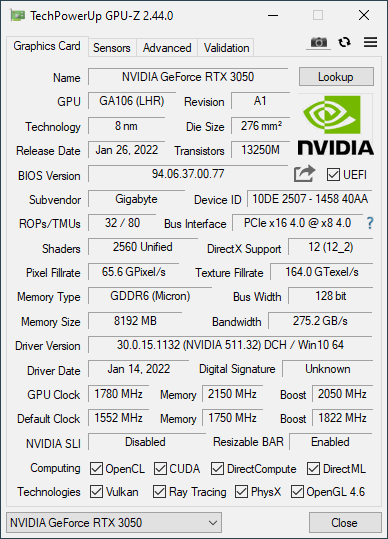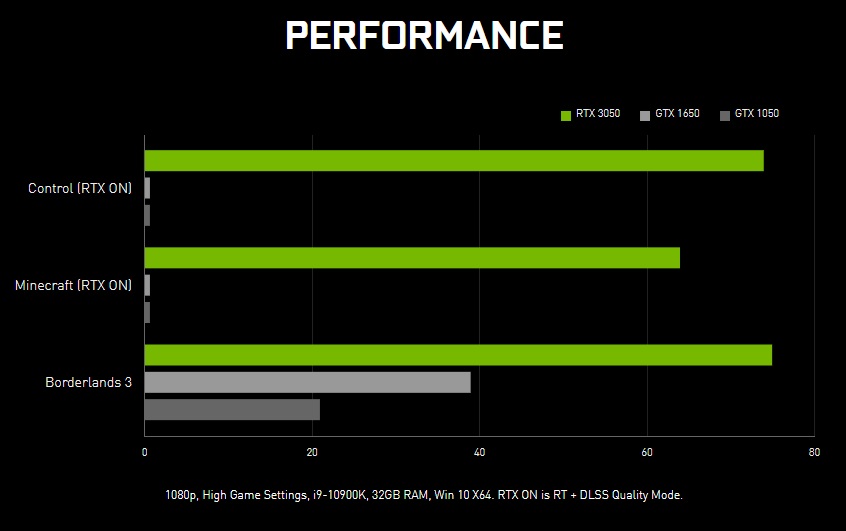GeForce RTX 3050

The NVIDIA GeForce RTX 3050 is a relatively affordable graphics card introduced by NVIDIA as part of the Ampere architecture. In this article, we'll take a look at the development history, announcement and release dates, architecture details, specs, in-game performance at release against the competition, and interesting facts about the RTX 3050 graphics card.
Development and announcement date
The Ampere architecture was announced by NVIDIA in September 2020, including a number of innovations such as an improved 8nm manufacturing process and new technologies such as RTX IO and DLSS 2.0. These technologies have made it possible to create more realistic graphic scenes and accelerate processes such as 4K resolution and artificial intelligence.
NVIDIA announced the RTX 3050 in May 2021 as an affordable and efficient desktop graphics card designed with a focus on gamers on a budget and those who prefer to play at medium graphics settings.
release date
The GeForce RTX 3050 went on sale in June 2021. The price at the time of release was around US$250, making it one of the most affordable graphics cards on the market.
Detailed architecture and specifications
The RTX 3050 is based on the Ampere architecture and uses the GA107 GPU. The graphics card has 3584 CUDA cores, 112 tensor cores and 28 RT cores. The base clock is 1550 MHz and the boost clock is 1740 MHz.

The video card is equipped with 8 GB GDDR6 video memory with a bandwidth of 448 Gbps, and the video memory interface is 128-bit. TDP (Thermal Design Power) video
arty is 130W, which requires reliable and efficient cooling for stable operation.
Gaming performance at release vs. competitors
The RTX 3050 offered good gaming performance at medium to high settings at 1080p. Compared to the previous generation, the RTX 2050, the graphics card showed a significant performance improvement thanks to the Ampere architecture and new technologies such as DLSS 2.0.

One of the main competitors of the RTX 3050 is the AMD Radeon RX 6600, which also offers good performance in the mid-range segment. Depending on the game and graphics settings, these graphics cards may show similar performance, although the RTX 3050 has an advantage in games with ray tracing and DLSS 2.0 support.
Interesting facts about the video card
-
The RTX 3050 is the first graphics card in the RTX 30 series to offer 8GB of GDDR6 VRAM in the mid-range price segment, allowing it to process large amounts of data and provide better performance in today's games.
-
The RTX 3050 supports NVIDIA Reflex and NVIDIA Broadcast technologies that enhance gaming experience and provide tools for streamers and content creators. NVIDIA Reflex technology reduces system latency for a more responsive gaming experience, while NVIDIA Broadcast delivers audio and video enhancements for streaming and videoconferencing.
-
The RTX 3050 was available in a variety of flavors from NVIDIA partners, offering a variety of cooling options, clock speeds, and designs. This gave consumers the opportunity to choose the graphics card that best suits their requirements and preferences.
Conclusion
The NVIDIA GeForce RTX 3050 marks a milestone in mid-range graphics cards, providing access to the latest technologies such as ray tracing and DLSS 2.0 at a relatively affordable price. The Ampere architecture has improved performance and efficiency over previous generations of graphics cards, making the RTX 3050 an attractive choice for gamers on a budget and those who prefer to play at medium graphics settings.
In addition, the RTX 3050 competed successfully against AMD graphics cards in its price range, and in some cases had an advantage in games with ray tracing and DLSS support. As a result, the GeForce RTX 3050 has become one of the most popular choices among gamers and enthusiasts at the time of release.
However, with the passage of time and the release of new generations of graphics cards, the RTX 3050 may no longer be the best choice for today's games. Yet, the history of the development and implementation of this graphics card has demonstrated NVIDIA's commitment to innovation and improvement of graphics capabilities for a wider range of users.



